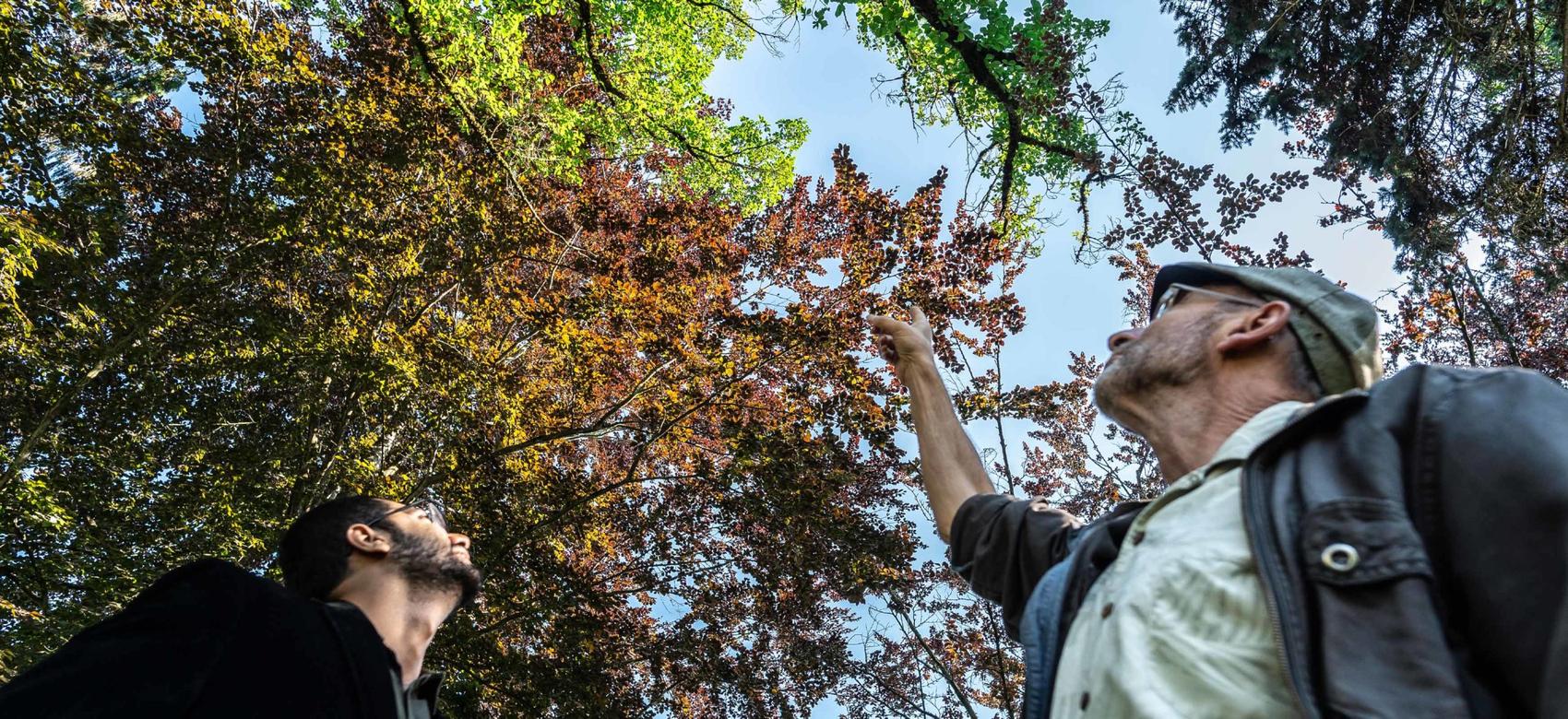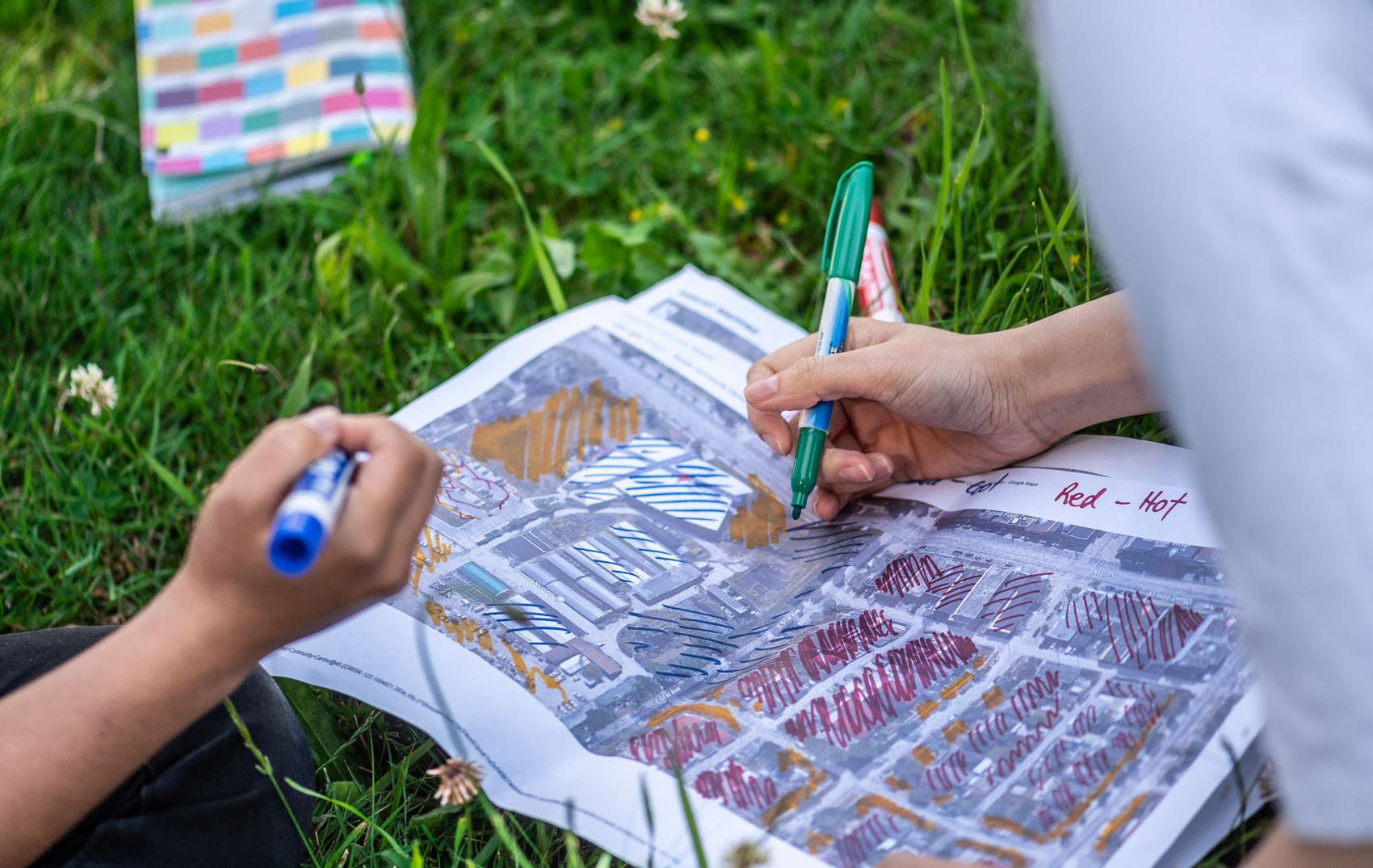How to climate-proof your neighbourhood, one step at a time
By Carolyn Ali

Here’s one thing you can do this summer to fight climate change: take a walk in your neighbourhood.
Stroll down your block and really pay attention to all the trees (or lack thereof) surrounding your home. Look up, and see how much shade they provide.
Then think about what your block might feel like over the next 10 to 30 years if our summer temperatures rise by four degrees, as projected. If we don’t cut our collective carbon footprint in half by the 2050s, your neighbourhood could feel more like southern California than the south coast of B.C.
“Trees are the most efficient air conditioner we’ve got,” explains Dr. Stephen Sheppard, who teaches in the urban forestry program at UBC and advocates climate action on a neighbourhood scale. In cities, trees provide shade for houses, which translates to heat protection for the people within. They cool the streets and regulate storm water run-off. They reduce the need for (and cost of) air conditioning. So besides absorbing carbon, the trees on your block protect you and your family from the potentially devastating consequences of heat waves, flash floods, storms and other effects of climate change.
Of course, just looking at trees isn’t going to stop climate change. But it’s a good way to start thinking about the small changes you can make to help your neighbourhood collectively combat rising temperatures and keep our trees alive during droughts. And, as the COVID-19 pandemic has shown us, collective action matters.
“We have seen how we’re very dependent on what other people do. But we’ve also seen that we can overcome vulnerabilities if we work together.”
Dr. STEPHEN SHEPPARD, UBC Faculty of Forestry
“Because of COVID-19, people have a much stronger understanding of their own vulnerability, as individuals and as a community, to big things happening beyond their control elsewhere,” notes Sheppard. “We have seen how we’re very dependent on what other people do. But we’ve also seen that we can overcome vulnerabilities if we work together.”
Sheppard says that we’ve also seen that people can make massive, rapid changes to their behaviour in response to clear government and societal messaging on what individuals need to do to tackle a big collective problem. He believes the current crisis presents a once-in-a-generation opportunity to take action on climate change at all levels and to rebuild our communities to be greener, cleaner and more resilient in the wake of COVID-19.
Paying attention to our urban forests is one way. That’s the vegetation and landscapes — such as public parks, streetscapes, natural areas and yards — found throughout our cities. There are many practical actions you can take to make our urban forests more resilient, such as planting trees in your yard, watering your street trees or growing local food.

Taking action
So where do we start?
You can begin by checking out the Citizen’s Coolkit on Climate Change and Urban Forestry, a DIY toolkit developed by Sheppard’s team. The series of hands-on activities are designed to help you see your neighbourhood in a new way, re-imagine your future and make climate change solutions visible.
For example, you can map your neighbourhood for vulnerabilities to heat or flooding due to climate change. These include a lack of tree canopy, too much asphalt and dark roofs that absorb heat, and extensive hardscape that could lead to flash floods. Then you can start to mitigate these risks with actions such as installing solar panels or replacing your lawn with a rain garden (a shallow garden that slows and captures storm water that would otherwise enter drains and pollute our oceans).
“Trees are the most efficient air conditioner we’ve got.”
Dr. STEPHEN SHEPPARD, UBC FACULTY OF FORESTRY
While the Coolkit was conceived to help neighbours connect and take action together, many of the activities can be done by individual households or families, by neighbours with physical distancing, or by meeting online. The actions start small and ramp up the level of engagement in five steps, from simply having a conversation about tree canopies to planning improvements on your block, to installing a rainwater-collection system or planting fruit trees.
Go on an Urban Forest Quest
How easy is it for squirrels to get around in the treetops on your block? Answering that question can help assess your neighbourhood’s resilience to climate change.
The Urban Forest Quest in the Citizen’s Coolkit is a 30-minute activity that spotlights “squirrel habitat” — the canopy of shady trees. Here’s what to do.
Conduct a tree count
Count the number of trees on your block. Large trees growing together cool the air, insulate against storms and reduce water runoff. One tree can absorb about 48 pounds of carbon per year.

18 per cent of Vancouver is covered by tree canopy. The city aims to increase this to 22 per cent by 2055.
Check the size of the trees
Measure the trunk size of the biggest and smallest trees on your block. Bigger trees provide more shade and many other ecosystem benefits. Small, ornamental trees provide less shade canopy and cooling benefits and often don’t live as long.
However, older trees could also be vulnerable to windstorms and will eventually need to be replaced, depending on how well they’re cared for. According to Sheppard, we should be planting young trees now that will grow bigger to ensure we have enough canopy later.
Take the “leaping squirrel test”
Squirrels live up in the trees and are safer there than on the ground. Can a squirrel make it from one end of the block to the other and cross the street at least twice, without coming down? Assume squirrels can leap about two metres between branches (that’s about six feet, or the height of a person).
If it’s easy for squirrels to leap from treetop to treetop, that’s a good thing, says Sheppard. A fuller tree canopy, which happens to be better for squirrels, means your block will be cooler, less polluted and less flood-prone in the future. If the tree canopy is sparse, consider planting more trees in the area for shade.
There are plenty of other ways to start climate-proofing your neighbourhood.
Check out the Citizen’s Coolkit
Carolyn Ali is a writer for UBC’s Brand and Marketing.
Feel free to republish the text of this article, but please follow our guidelines for attribution and seek any necessary permissions before doing so. Please note that images are not included in this blanket licence.








